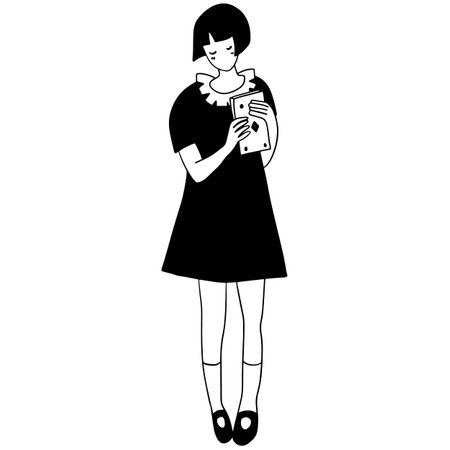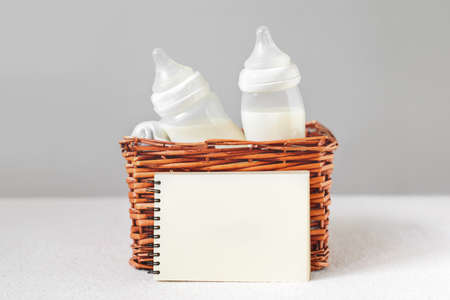What Is Paced Bottle Feeding?
Paced bottle feeding is a method of bottle-feeding that closely mimics breastfeeding. Instead of allowing milk to flow freely from the bottle, this technique helps babies control their intake by slowing down the feeding process. This approach supports better digestion and allows babies to eat at their own pace, reducing the risk of overfeeding.
How Does It Mimic Breastfeeding?
Breastfed babies naturally regulate their intake by sucking, pausing, and swallowing at a comfortable rhythm. Paced bottle feeding encourages the same pattern by positioning the bottle in a way that requires babies to actively suck for milk, just like they would at the breast. This helps prevent them from gulping milk too quickly.
Benefits of Paced Bottle Feeding
This feeding method offers several advantages for both babies and parents:
| Benefit | Description |
|---|---|
| Mimics Natural Breastfeeding | Encourages babies to suck, swallow, and pause naturally, just like they would when nursing. |
| Prevents Overfeeding | Babies learn to recognize when they are full, reducing the chances of overeating. |
| Aids Digestion | A slower feeding pace reduces air intake, which can help minimize gas and discomfort. |
| Easier Transition Between Breast and Bottle | If you’re combining breastfeeding and bottle-feeding, this method makes it easier for babies to switch between the two. |
2. Benefits of Paced Bottle Feeding
Paced bottle feeding offers numerous benefits for both babies and parents. This method encourages a more natural feeding experience, similar to breastfeeding, helping babies develop healthy eating habits. Below are some key advantages of using paced bottle feeding:
Reduces Overfeeding
One of the biggest benefits of paced bottle feeding is that it helps prevent overfeeding. Since the baby controls the pace, they can stop when they feel full, rather than being forced to finish a bottle too quickly. This promotes healthy appetite regulation and reduces the risk of excessive weight gain.
Prevents Gas and Reflux
Babies who drink too quickly may swallow excess air, leading to gas, discomfort, and reflux. Paced bottle feeding slows down the process, allowing babies to swallow less air and reducing issues like colic and spit-up.
Promotes Self-Regulation
This method teaches babies to listen to their own hunger and fullness cues. Instead of being encouraged to finish an entire bottle regardless of their needs, they learn to eat just the right amount. This skill can help establish healthier eating habits as they grow.
Fosters a Stronger Parent-Baby Bond
Paced bottle feeding creates a more intimate feeding experience. Parents can hold their baby close, maintain eye contact, and respond to their baby’s cues in a nurturing way. This helps strengthen the emotional connection between parent and child.
Comparison: Traditional vs. Paced Bottle Feeding
| Aspect | Traditional Bottle Feeding | Paced Bottle Feeding |
|---|---|---|
| Feeding Speed | Fast; baby may drink too quickly | Slow; baby controls the pace |
| Risk of Overfeeding | Higher; baby may consume more than needed | Lower; baby stops when full |
| Gas and Reflux Issues | More common due to fast intake of milk and air | Less common as baby swallows less air |
| Self-Regulation Development | Lesser; baby may not recognize fullness cues | Better; encourages listening to hunger signals |
| Parent-Baby Interaction | Limited; focus is on finishing the bottle | Stronger; promotes bonding through responsiveness |
Paced bottle feeding is a gentle, responsive way to feed your baby that mimics breastfeeding while offering flexibility with bottle feeding. By incorporating this method into your routine, you can support your babys digestion, growth, and overall well-being.

3. Step-by-Step Guide to Paced Bottle Feeding
Paced bottle feeding is a great way to help your baby feed more comfortably and naturally. By following these simple steps, you can ensure that your little one enjoys a slow, relaxed feeding experience.
How to Hold Your Baby
Proper positioning is essential for paced bottle feeding. Follow these tips to hold your baby correctly:
- Hold your baby in an upright or semi-upright position, supporting their head and neck.
- Avoid laying them flat, as this can cause milk to flow too quickly.
- Maintain eye contact to create a bonding experience.
Positioning the Bottle
The way you hold the bottle affects milk flow and helps prevent overfeeding. Keep these points in mind:
- Hold the bottle horizontally instead of tilting it downward.
- This positioning slows the milk flow, allowing your baby to control the pace.
- If needed, gently tip the bottle just enough so there is always some milk in the nipple.
Controlling Milk Flow
Paced feeding mimics breastfeeding by giving your baby small breaks between sips. Here’s how you can control milk flow effectively:
| Step | Description |
|---|---|
| Let baby latch onto the bottle | Tickle their lips with the nipple and let them take it into their mouth at their own pace. |
| Pace the feeding | Every 20-30 seconds, tip the bottle down slightly to pause milk flow and allow your baby to rest. |
| Watch for hunger cues | Your baby may take breaks naturally—this is normal and should be encouraged. |
| Avoid forcing them to finish | If they turn away or stop sucking, respect their signals that they are full. |
Mimicking Breastfeeding Rhythms
Paced feeding helps babies regulate their intake just like they would when nursing from the breast. Here are a few additional tips:
- Babies naturally suck in bursts—allow pauses during feeding.
- If your baby seems frustrated, adjust the angle of the bottle slightly.
- Avoid using fast-flow nipples; slow-flow nipples work best for paced feeding.
Ensuring Comfort During Feeding
Your babys comfort is key to a positive feeding experience. Keep these things in mind:
- Create a quiet and calm environment for feeding time.
- Avoid distractions so your baby can focus on eating at a comfortable pace.
- Burp your baby halfway through and after feeding to reduce gas discomfort.
4. Common Mistakes and How to Avoid Them
Paced bottle feeding is a fantastic way to ensure your baby feeds comfortably and safely, but there are some common mistakes that parents and caregivers can make. Here are a few frequent errors and how to correct them.
Forcing the Bottle
Sometimes, caregivers may try to encourage a baby to finish a bottle even when the baby shows signs of being full. This can lead to overeating and discomfort.
How to Avoid It:
- Watch for signs that your baby is full, such as turning away or slowing down.
- Let your baby set the pace rather than trying to finish the entire bottle.
- If your baby refuses the bottle, don’t force it—wait and try again later if needed.
Ignoring Hunger and Fullness Cues
Babies have natural hunger and fullness cues, but sometimes these signals get overlooked in a strict feeding schedule.
How to Avoid It:
- Look for early hunger cues like rooting, sucking on hands, or smacking lips.
- Avoid waiting until your baby is crying, as this can make feeding more stressful.
- If your baby slows down or turns away, respect their cues and stop feeding.
Rushing Feedings
Paced bottle feeding works best when done slowly, mimicking breastfeeding. Feeding too quickly can cause discomfort and digestive issues.
How to Avoid It:
- Hold the bottle horizontally so milk flows slower.
- Pause frequently during feeding to let your baby rest.
- Aim for feedings to last about 10-20 minutes, similar to breastfeeding sessions.
Mistakes and Solutions at a Glance
| Mistake | Solution |
|---|---|
| Forcing the bottle | Follow babys cues; don’t push them to finish the bottle. |
| Ignoring hunger/fullness signs | Watch for signals like rooting or turning away. |
| Rushing through feedings | Pace feedings to last around 10-20 minutes with pauses. |
5. Paced Bottle Feeding and Breastfed Babies
Paced bottle feeding is an excellent method for all babies, but it is especially beneficial for breastfed babies. Since breastfeeding and bottle-feeding require different sucking techniques, paced feeding helps bridge the gap between the two, making it easier for your baby to transition smoothly between breast and bottle.
Why Is Paced Bottle Feeding Important for Breastfed Babies?
Breastfed babies are used to controlling the flow of milk when nursing. Traditional bottle-feeding often delivers milk much faster than breastfeeding, which can lead to overfeeding or cause a baby to prefer the bottle over the breast due to its ease.
Key Benefits of Paced Bottle Feeding for Breastfed Babies
| Benefit | Description |
|---|---|
| Mimics Natural Nursing | Paced feeding allows babies to suck, swallow, and breathe in a rhythm similar to breastfeeding. |
| Prevents Flow Preference | Since milk doesnt flow too quickly, babies won’t develop a preference for the bottle over the breast. |
| Reduces Overfeeding | The baby has more control over intake, reducing the risk of overeating and digestive discomfort. |
| Smoother Breast-to-Bottle Transition | This method helps maintain breastfeeding while allowing bottle-feeding as needed. |
How to Use Paced Bottle Feeding with a Breastfed Baby
If you want to ensure a seamless transition between breast and bottle, follow these steps:
Select the Right Bottle and Nipple
- Choose a slow-flow nipple that closely mimics the breast.
- A wide-base nipple can help encourage a natural latch.
Hold Your Baby Upright
- Sit your baby in an upright position rather than lying flat.
- This prevents milk from flowing too fast and allows them to work for their milk just like they do at the breast.
Pace the Feeding Session
- Tilt the bottle just enough so that milk fills the nipple without flooding your babys mouth.
- Encourage pauses every few sips to mimic natural breastfeeding rhythms.
- If your baby seems full or slows down, respect their cues instead of encouraging them to finish the bottle.
Paced Bottle Feeding Supports Breastfeeding Success
Paced bottle feeding helps maintain a strong breastfeeding relationship by ensuring your baby doesn’t become accustomed to an easier, faster milk flow from bottles. By taking it slow and following your babys hunger cues, you can make sure they continue to enjoy both breastfeeding and bottle-feeding without any issues.


